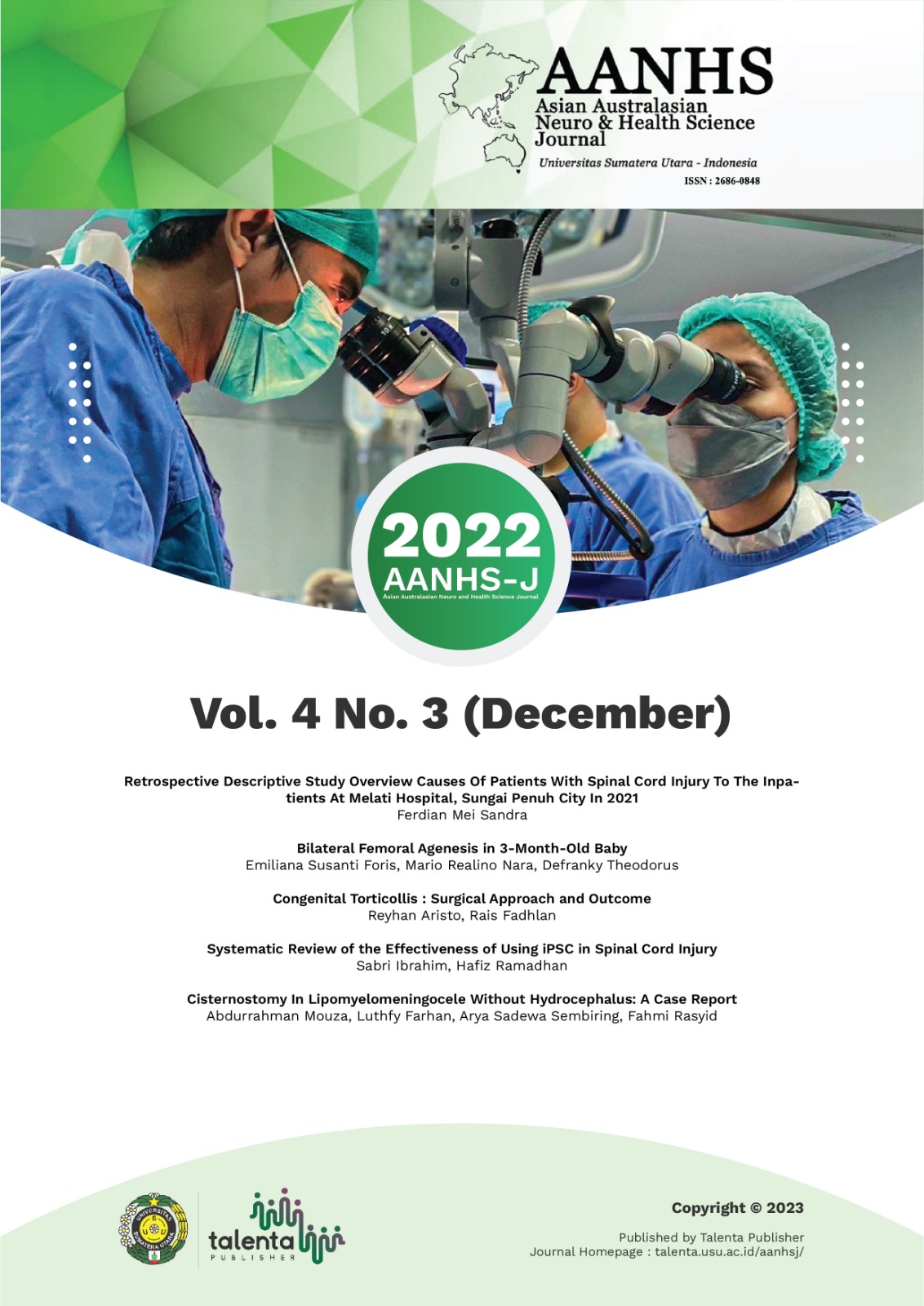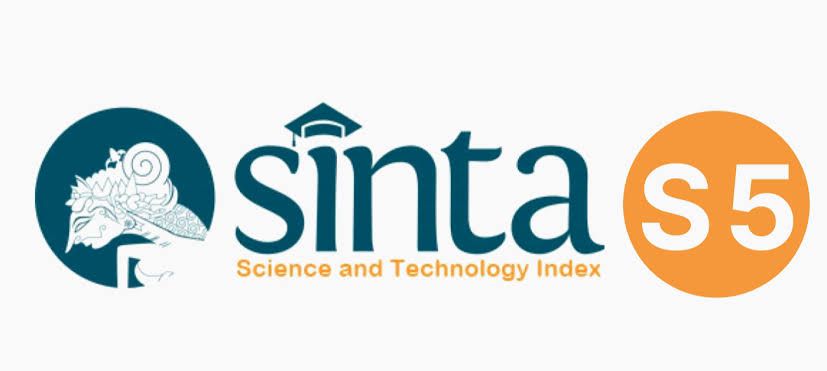Congenital Torticollis : Surgical Approach and Outcome
DOI:
https://doi.org/10.32734/aanhsj.v4i3.10379Keywords:
Outcome, Torticollis, BipolarAbstract
Introduction. Torticollis, also known as crooked neck, is a contraction or contracture of the neck muscles that causes the head to tilt to one side. This is accompanied by rotation of the chin to the opposite side with flexion. The congenital form of torticollis usually appears within a few weeks of birth. The basis of diagnosis is clinical examination findings, and the mainstay of treatment is physical therapy. Surgical management is an option only when medical and physical treatments are not producing the desired results or for cosmetic reasons.
Case Report. A-11 year young girl came with a chief complaints of a tilted head to the right, she also had difficulty shaking her head and nodding and had an asymmetrical face. This has been experienced since birth.
Result. The patient underwent bipolar removal of the lower end of the sternocleidomastoideus muscle (SCM). The patient’s neck was extended with a sandbag, and then the patient’s head was turned toward the shoulder on the opposite, uninvolved side. First, the distal portion of the SCM was released by making a skin incision 3 to 5 cm long on the medial end of the clavicle, with consideration given to palpable fibrous bands, and then deepening the incision to the tendons of the sternal and clavicular attachments of the SCM. The tight band and muscle tendon were dissected to pass a right angle instrument posterior to the tendons and were then resected by electrocautery near the insertion site to the clavicle. The SCM was then carefully dissected and released near the bone, while checking the nearby nerves and vessels. Outcomes were assessed using the cervicalmandibular angle (CMA), calculated using the radiological head tilt, which was defined as the angle between the line crossing the upper border of the C7 vertebral body and another line connecting the lower border of the mandibular angle.
Conclusion. Release of the bipolar CMT in the patient in this study increased head tilt, leading to a better quality of life since surgery, and the patient adapted fairly well to her new neck position.
Downloads
Downloads
Published
How to Cite
Issue
Section
License
Copyright (c) 2022 Asian Australasian Neuro and Health Science Journal (AANHS-J)

This work is licensed under a Creative Commons Attribution-NonCommercial-ShareAlike 4.0 International License.
The Authors submitting a manuscript do understand that if the manuscript was accepted for publication, the copyright of the article shall be assigned to AANHS Journal.
The copyright encompasses exclusive rights to reproduce and deliver the article in all forms and media. The reproduction of any part of this journal, its storage in databases and its transmission by any form or media will be allowed only with a written permission from Asian Australasian Neuro and Health Science Journal (AANHSJ).
The Copyright Transfer Form can be downloaded here.
The Copyright form should be signed originally and sent to the Editorial Office in the form of original mail or scanned document.














